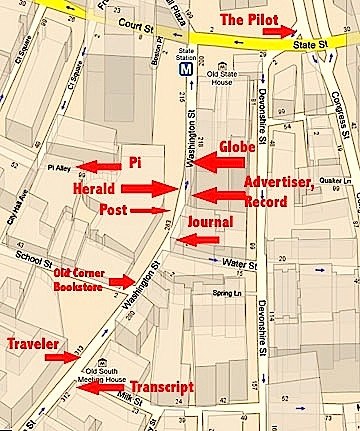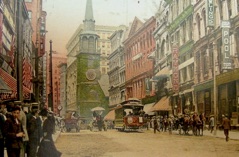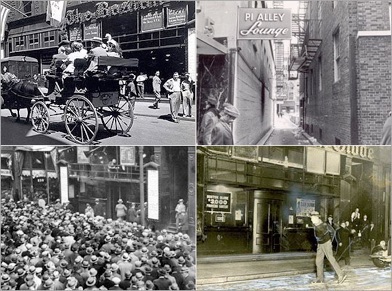Washington Street:
Boston’s Newspaper Row
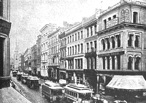
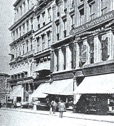
Washington Street:
Boston’s Newspaper Row
Left: 19th century photo of Washington Street, between Franklin and Milk Streets. (Moses King’s “How to See Boston”) Middle: Washington Street in 1885. (Moses King’s “How to See Boston”) Right: Washington Street facing north (19th century Boston postcard)
By the end of the 19th century most of Boston’s newspapers and magazines were concentrated on Washington Street between Milk and State (above). Many papers were started and died there, and the last to leave was The Boston Globe in 1958. Often papers exhibited their news stories on bulletin boards and blackboards in their street-level windows.
German travel-book publishing magnate Karl Baedeker called Washington Street “one of the most crowded thoroughfares in Christendom” (Baedeker 75).
Boston’s “Newspaper Row” journalism was considered by critics to be sensational and parochial. Liberals, such as Oscar Garrison Villard (a journalist, editor, founder of The Nation magazine and the NAACP and grandson of The Liberator’s William Lloyd Garrison) called it the nation’s “journalistic poor farm” and its leading newspaper, the Boston Post, the Row’s “scarlet woman” (Villard 175-77).
A fascinating “Then and Now” photo essay about Boston’s Newspaper Row was done by Alli Knothe for boston.com:
